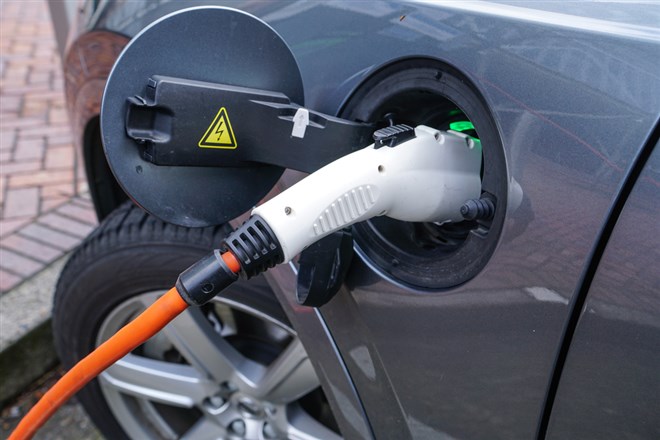
Sometimes the hunted become the hunters.
Back in 2018, traditional automakers like Ford, Chevrolet, and Toyota made more money than anyone selling electric vehicles in the United States. Then Tesla burst onto the scene.
With Tesla all-in on EVs and the old guys making a mix of gas guzzlers and EVs, the EV market quickly got turned on its head. It sure didn’t take long for Elon Musk to ascend to the top of the mountain and leave the legacy players in the dust.
If you bought an EV this year, chances are it was a Tesla. According to the Cox Automotive report, the Model 3, S, X, and Y have accounted for 68% of U.S. EV sales year-to-date.
The rest of the pack is clearly playing catchup to Tesla’s domestic dominance—but aren’t as far behind as you may think. Tesla’s overall market share slipped to 64% in Q3, an inevitability that reflects the surge in EV participants and the rising popularity of non-Tesla EVs.
Based on what we’ve learned in recent weeks and the long runway ahead for EV growth, this race is far from over.
Who Ranks Second to Tesla in U.S. EV Sales?
Ford Motor Company (NYSE: F) has only introduced a trio of all-electric vehicles but they’ve all been big hits. So far this year, only the Tesla Model Y and Model 3 have outsold the Ford Mustang Mach-E. Granted, there remains a big gap between the Mach-E’s third place position and the Model 3’s number-two spot, but the Ford offering has a sizable lead on the Model S and Model X, not to mention the Chevy Bolt.
Meanwhile, production of the highly anticipated F-150 Lightning is starting to ramp after a hot debut. Nearly 9,000 units of the all-electric pickup have been sold year-to-date helping Ford solidify its number two ranking behind Tesla in U.S. retail EV sales.
Then there’s the commercial EV side of the business which is killing it. The Ford E-Transit commands 90% of the domestic full-size electric van market—and production is just ramping there as well. Given the popularity of grocery and other delivery services and fleet operators’ planet-friendly goals, E-Transit is an undervalued growth catalyst for Ford.
Year-to-date Ford’s three EVs combined control an 8.2% share of the domestic EV market. Its EV ambitions have only begun. By the end of the decade, the company expects that up to 50% of production will be fully electric. It is on track to hit a global EV capacity of 600,000 units by the end of 2023. And after investing $11.4 billion in a Tennessee “mega campus” and a pair of Kentucky battery plants, Ford doesn’t appear satisfied with being runner-up.
What is General Motors’ EV Advantage?
In a recent letter to shareholders, General Motors Company (NYSE: GM) outlined a strategy to “rapidly grow EV volumes by winning in high-volume segments”. After snagging 8% of the U.S. EV market in Q3, management’s plan is progressing well.
The Chevy Bolt EV/EUV is the pace car. Record Bolt sales drove a better than expected third quarter performance at GM highlighted by 48% year-over-year earnings growth. It gets better. Production of the popular ride is scheduled to ramp by almost 60% next year as GM capitalizes on strong demand for its flagship EV.
Like Ford, GM is going after the mass market and letting Tesla and pure plays have the luxury space. Especially in today’s inflationary economy, the move seems to be paying off. From grocery store items to big ticket items, consumers are looking for value everywhere. GM is making the EV shopping experience affordable.
In a span of just a few weeks, GM rolled out the new Chevy Equinox EV, GMC Sierra EV, and Cadillac Celestiq to expand its EV lineup. The end goal is to manufacture one million EVs by 2025. If inflation is under control by then, GM could have a few more value-priced winners on its hands.
Are Toyota’s EV Sales Significant?
Toyota Motor Corporation (NYSE: TM) has faced criticism for its progress in the EV market but is starting to step on the gas…er, electric pedal. Electrified vehicle sales are expected to represent 31% of total sales in fiscal 2023 after they were 28% in the previous fiscal year. Not a huge jump, but one worth noting considering management is projecting EVs to be 40% of sales by 2025—and 70% by 2030.
The Japanese automaker has a long road ahead to reach these goals but is beginning to ramp up production. The Prius, Toyota’s early market entrant is still performing as is the Sequoia and Sienna but more horsepower is needed.
Soon the 2023 Corolla Crown sedan and 2023 Corolla Cross Hybrid crossover will hit the roads adding to the company’s fleet of more than a dozen fuel cell and hybrid vehicles. These additions will help advance Toyota’s goal of having 30 electrified vehicles in its lineup by 2030.
As with Ford and GM, Toyota’s competitive advantage in the mainstream EV market is brand familiarity. Taking the ‘if ain’t broke don’t fix it’ mantra, the company is launching electric versions of top-selling gas-powered vehicles. The flurry of pure plays on the other hand, must build a reputation from scratch. Established trust could be a valuable edge for the old-school EV players.












